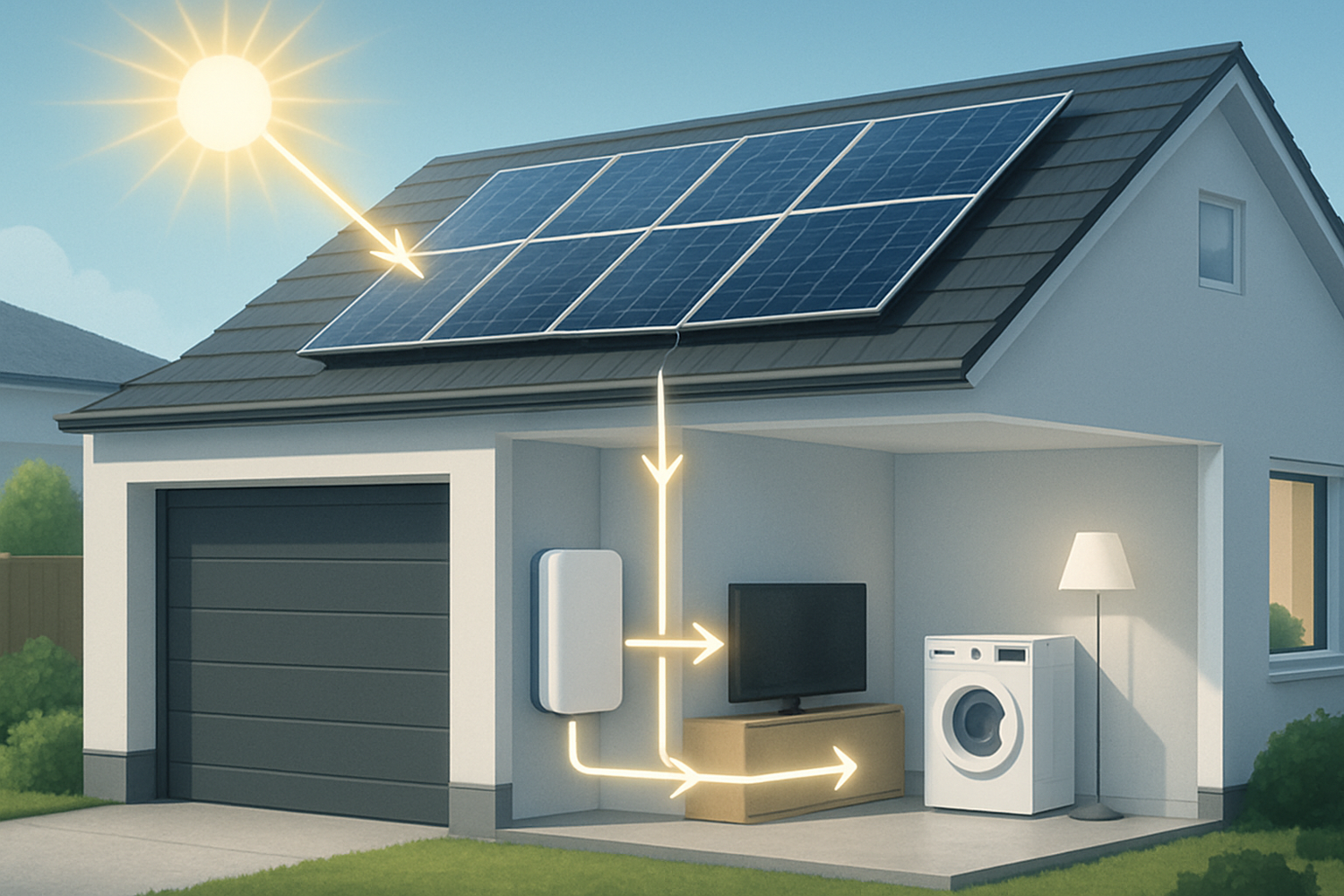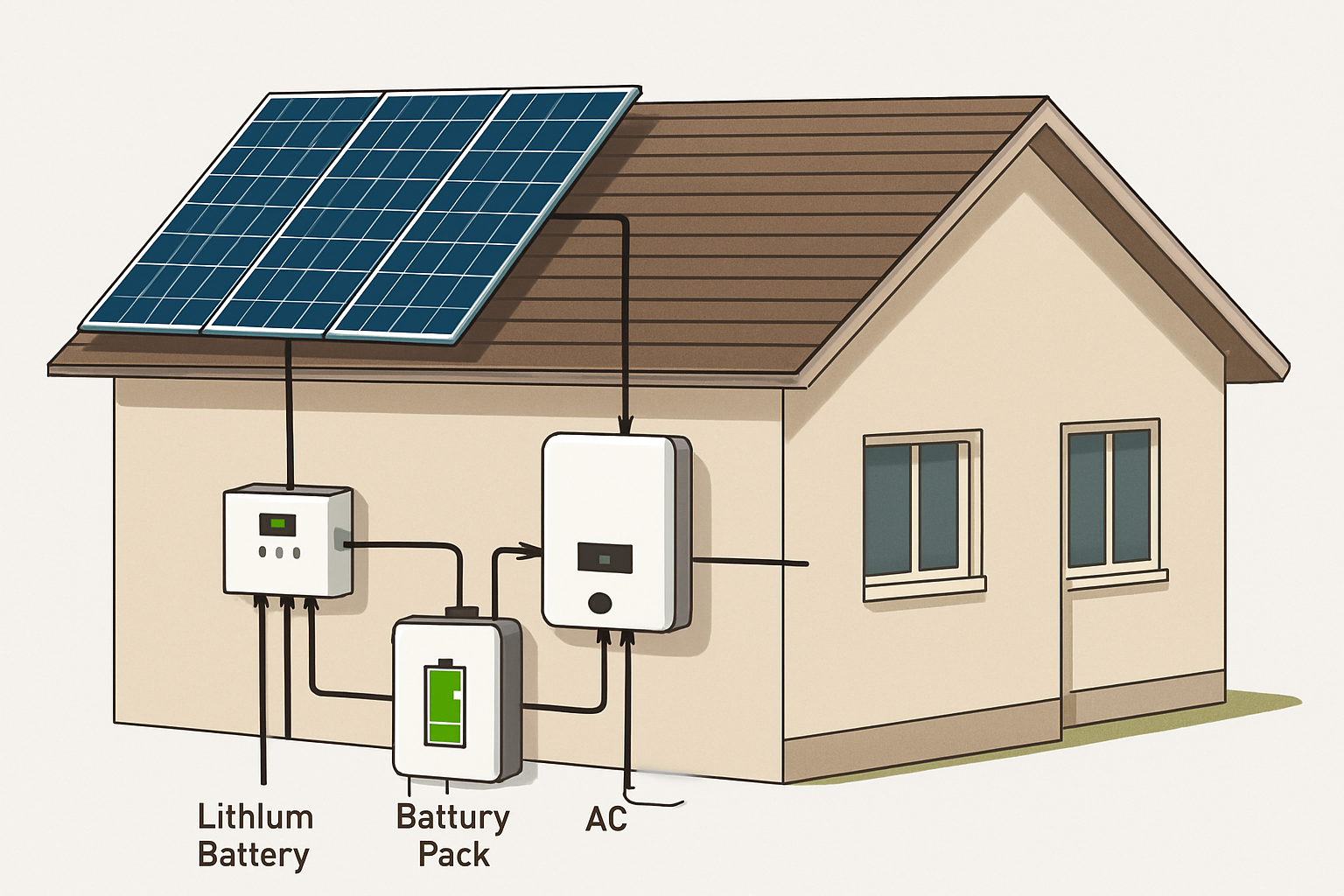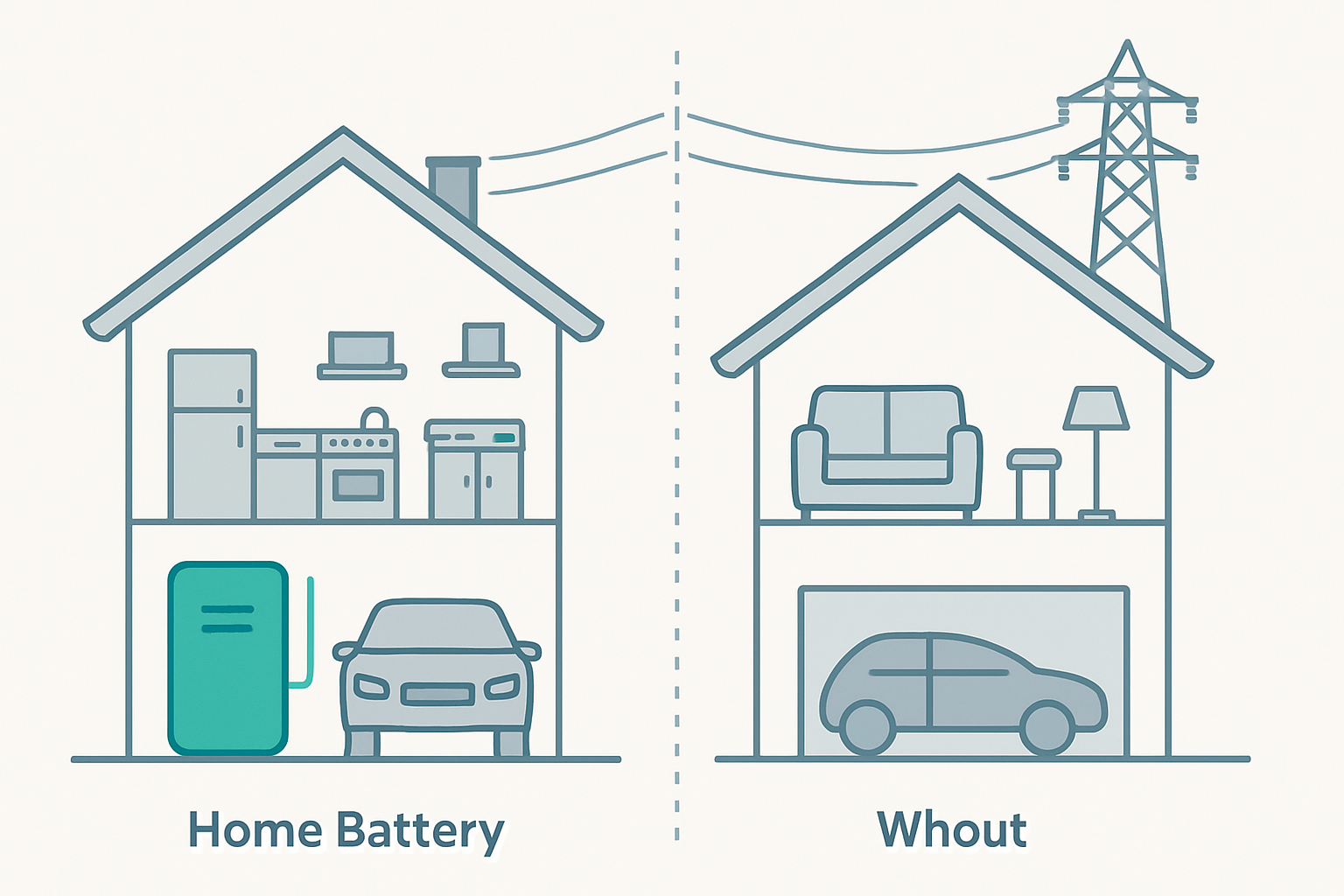Solar panels are a powerful first step toward reducing your electricity bills and embracing clean energy. They capture sunlight and convert it into power for your home. But their production is limited to daylight hours. To unlock the full potential of your solar investment and achieve true energy resilience, you need a way to store that power. A home solar battery is the component that makes this possible, turning your system into a comprehensive energy solution.
Beyond Solar Panels: Unlocking True Energy Independence
A solar system battery fundamentally changes your relationship with energy. It moves you from being just a producer to having full control over how and when you use your power. This shift provides both practical security and peace of mind.
Storing Your Sunshine for Later Use
Think of a home solar storage unit as your personal energy bank. During the day, your solar panels often generate more electricity than your home is consuming. Without a battery, this excess power is typically sent back to the grid. With a battery, you can save this surplus energy. When the sun goes down or on cloudy days, you can draw from your stored power instead of buying it from the utility company, significantly increasing your self-consumption.
Gaining Control During Power Outages
One of the most compelling reasons to add a battery is for energy security. A standard grid-tied solar system without a battery will automatically shut down during a power outage to prevent sending power into the grid where workers may be making repairs. A solar battery installation allows your home to operate independently from the grid. When an outage occurs, the battery can seamlessly take over, powering essential appliances like refrigerators, lights, and medical devices. This capability is increasingly important as grid stability becomes a greater concern.
The Financial Case for Home Solar Storage
While providing backup power is a key function, a solar system battery also offers significant financial advantages. It helps you use your own energy more strategically and protects you from changing utility policies and rising electricity costs.
Maximizing Self-Consumption and Reducing Grid Reliance
Many utility companies have Time-of-Use (TOU) rate plans, where electricity costs more during peak demand hours, usually in the late afternoon and evening. A battery allows you to store the solar energy you generate during off-peak hours (midday) and use it during these expensive peak periods. This practice, known as load shifting, directly reduces your electricity bills by avoiding the highest rates.
Navigating Changes in Solar Billing Policies
Policies like net metering, which credit solar owners for the excess power they send to the grid, are changing. In many areas, utilities are reducing the value of these credits. This makes sending excess power to the grid less financially rewarding. With a battery, you can store and use that excess energy yourself, ensuring you get the full value from every kilowatt-hour your panels produce. This makes your investment less dependent on utility policies you cannot control.
Understanding the Return on Investment
A battery adds to the upfront cost of a solar installation, but its value is realized over time through lower utility bills and protection from power outages. According to the International Renewable Energy Agency (IRENA), the costs for battery storage have been falling significantly, making the technology more accessible. The return on investment is a combination of direct savings and the invaluable security of having a reliable power source.
| Feature | Solar Panel System Only | Solar System with Battery |
|---|---|---|
| Upfront Cost | Lower | Higher |
| Grid Reliance | Reliant on grid at night and during outages | Reduced reliance, uses stored energy |
| TOU Savings | Limited; sells excess power at potentially low rates | Maximizes savings by avoiding peak rates |
| Backup Power | No backup; system shuts down in an outage | Provides seamless backup power |
| Long-Term Value | Saves on energy bills when sun is shining | Greater long-term savings and energy security |
Disclaimer: This table provides a general comparison. Actual savings and costs vary based on location, utility rates, and system size. This is not financial advice.
Choosing the Right Battery for Your Solar Panels
Selecting the best home battery for solar involves looking at its performance, chemistry, and how it fits your energy needs. Modern battery technology offers safe, durable, and efficient options for homeowners.
Key Performance Metrics to Consider
When comparing batteries, several metrics are important. As outlined in the ultimate reference on solar storage performance, key factors include capacity (kWh), power rating (kW), Depth of Discharge (DoD), and round-trip efficiency. A higher round-trip efficiency means less energy is lost during the charging and discharging process, maximizing the power available to you.
The LiFePO4 Advantage: Safety and Longevity
Lithium Iron Phosphate (LiFePO4) has become a leading battery chemistry for home solar storage. LiFePO4 batteries are known for their exceptional safety, thanks to their stable chemical structure that resists overheating. They also offer a very long cycle life, often capable of thousands of charge-discharge cycles, which translates to a lifespan of 10-15 years or more. This durability makes them a reliable and long-lasting component of your home energy system.
Integrating a Battery into Your Home Energy System
Proper integration ensures your solar and storage system works efficiently and meets your specific needs. This involves correct sizing and ensuring all components are compatible.
Sizing Your Solar Battery Installation
The right size for your battery depends on your goals. Do you want to power your entire home during an outage, or just essential appliances? Sizing involves analyzing your daily energy consumption, the output of your solar panels, and your backup power requirements. A typical home battery might range from 10 to 20 kWh, but a professional assessment can determine the optimal capacity for your household.
Installation and System Compatibility
Adding a battery to a solar system requires careful planning. For new installations, a hybrid inverter that can manage power from solar panels, the battery, and the grid is an efficient choice. Existing solar systems can also be retrofitted with a battery, a process known as AC coupling. The International Energy Agency (IEA) highlights that effective integration of storage is crucial for stabilizing power grids as more renewables are added. Due to the complexities, a professional installation is recommended.
Disclaimer: The installation of energy storage systems involves high-voltage electricity and should be performed by qualified professionals. This information is for educational purposes and does not constitute professional installation advice.
Your Path to a Resilient Energy Future
Adding a battery to your solar panel system is more than an upgrade; it's a step toward securing your home's energy future. It provides independence from an aging grid, offers substantial financial benefits, and gives you control over the clean energy you produce. A solar system with a battery is a complete solution that delivers resilience and peace of mind, ensuring your home is powered day and night, no matter what.
Frequently Asked Questions
Can I add a battery to my existing solar panel system?
Yes, you can add a battery to an existing system through a process called retrofitting. This typically involves using an AC-coupled battery system that works alongside your current solar inverter. For new installations, a DC-coupled system with a hybrid inverter is often more efficient.
How long does a home solar battery last?
The lifespan of a solar battery depends on its chemistry and usage. High-quality Lithium Iron Phosphate (LiFePO4) batteries are typically warrantied for 10 years and can often last 15 years or more with proper maintenance. Their longevity is a key advantage over older battery technologies.
Is a solar battery worth the investment?
For many homeowners, a solar battery is a worthwhile investment. It increases energy independence, provides crucial backup power, and helps offset high electricity costs, especially in areas with Time-of-Use rates or low solar export credits. According to the U.S. Energy Information Administration (EIA), as grid dynamics and policies evolve, on-site storage becomes increasingly valuable. The financial viability depends on local utility rates, incentives, and your energy usage patterns.
How much storage capacity do I need?
The ideal capacity depends on your goals. For backup power, you'll need enough to cover essential appliances for a desired duration. To offset nighttime energy use, you will need to analyze your average overnight consumption. A typical home battery ranges from 10 to 20 kWh, but a professional can help determine the precise size for your needs.





Leave a comment
All comments are moderated before being published.
This site is protected by hCaptcha and the hCaptcha Privacy Policy and Terms of Service apply.